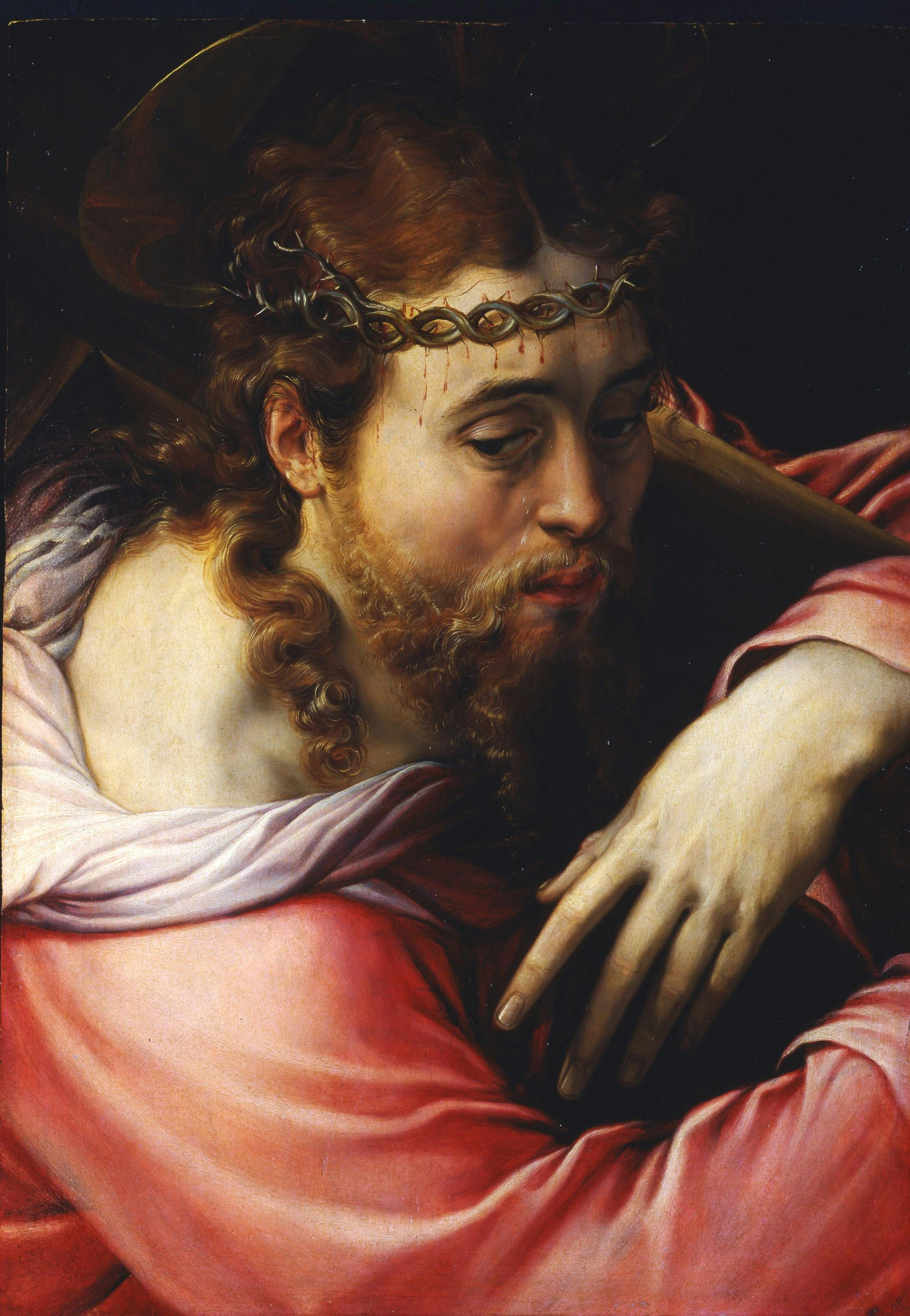Christ Carrying the Cross
Francesco de Rossi, known as Salviati (Florence c. 1509 - Rome 1563)
The small size of the painting indicates that it was intended for a bedroom or private chapel. It focuses on a close-up of Christ’s face, as he makes his way towards Mount Calvary with the cross on his shoulder. This subject was particularly popular in the mid-16th century, due to the lively debates on the themes of salvation and good Christian conduct, that were important in the spiritual circles where Juan de Valdés and Bernardino Tommassini, known as Ochino, gave their sermons. The serious, composed expression on Christ’s tear-streaked face, and his lowered gaze, which expresses all the humiliation inflicted by his torturers and the human pain of his imminent death, are rendered by an extremely refined, analytical painting style, characterized by painstaking attention to detail: from the crown of thorns piercing Christ’s forehead, causing fine trickles of blood, to his thick hair, entwined strand by strand in the same fashion as the tidy curls of his blond beard. The compact, glazed light of the surface, the pale color palette used, and the details which visibly render the transparencies of his diaphanous skin, in contrast with the bright red of his robe, evoke the finesse of contemporary Bronzino-style paintings. Salviati painted this small panel during his short Florentine period, between 1543 and 1548. During the same period, Salviati also painted the frescoes with Scenes from the Life of Furius Camillus in the Audience Room in Palazzo Vecchio, the drawings for the Scenes from the Life of Giuseppe Ebreo woven into tapestries by Flemish artist Nicolas Carcher, the large Deposition for the Dini altar in Santa Croce and various other portraits that bear witness to his versatility in a range of genres.
